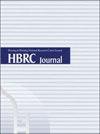Lateral loading resistance for shell foundations
Q2 Engineering
引用次数: 3
Abstract
ABSTRACT Shell foundations, or geometrically shaped footings, were first used as a substitute for the conventional flat shallow foundations in the nineteen fifties in Mexico, West Germany, India, China and the Soviet Union. It is not known whether their use was developed independently or was incorporated after observing their use elsewhere. However, it is certain that their use was not based on any research data that has been reported at that time. Since then, the use of shell foundations has drawn considerable interest around the world. Experimental and theoretical investigations by the author on ‘shell type’ foundations have shown significant increases in bearing capacity, better settlement characteristics, and ability to resist higher lateral forces which might be induced due to wind loads or earthquakes as compared to the conventional flat foundations. This is primarily due to partial absorption of the vertical load through lateral compression of the soil particles under the shell. Given these attributes, the practical implications could make shell foundations ideally suited for foundations subjected to lateral loadings. It is also known that shell foundations require less construction materials, which could benefit its use in developing countries where materials are scarce and expensive while labor is abundant and inexpensive. This paper presents analytical analysis of shell and flat foundations subjected to lateral loading. The results of this study will be presented in the form of a comparative study and numerical example, which will demonstrate that shell foundations are superior to resist lateral loading.壳体基础的横向荷载阻力
摘要:20世纪50年代,墨西哥、西德、印度、中国和苏联首次使用壳体基础或几何形状的基脚来代替传统的扁浅基础。目前尚不清楚它们的用途是独立开发的,还是在观察到它们在其他地方的用途后结合使用的。然而,可以肯定的是,它们的使用并不是基于当时报道的任何研究数据。从那时起,壳体基础的使用引起了全世界的极大兴趣。作者对“壳式”基础的实验和理论研究表明,与传统的平面基础相比,其承载力显著提高,沉降特性更好,能够抵抗风荷载或地震可能引起的更高的侧向力。这主要是由于外壳下土壤颗粒的侧向压缩部分吸收了垂直荷载。考虑到这些特性,实际意义可以使壳体基础非常适合承受横向荷载的基础。众所周知,壳体基础所需的建筑材料较少,这可能有利于在发展中国家使用,因为这些国家的材料稀缺且昂贵,而劳动力丰富且便宜。本文对承受侧向荷载的壳式和平板式基础进行了分析。这项研究的结果将以比较研究和数值示例的形式呈现,这将证明壳体基础优于抵抗横向荷载。
本文章由计算机程序翻译,如有差异,请以英文原文为准。
求助全文
约1分钟内获得全文
求助全文

 求助内容:
求助内容: 应助结果提醒方式:
应助结果提醒方式:


